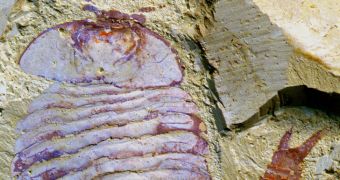Fuxianhuia Protensa will most likely be the arthropod that the archaeological and zoological communities will talk about the most for a while.
The reason is simple: the fossilized remains of one, dating back 520 million years ago, were found in China. They include the remarkably well-preserved remains of a brain.
These are the oldest brain fossils ever found, and show that the creature had a complex nervous system, inferring that animal life gained an advanced form much sooner than was previous assumed.
The brain itself is made of three parts and is similar to that of modern-day spiders, crabs and certain insects.
Scientists used to think that arthropods living so long ago had a nervous structure similar to fairy shrimps and other brachiopods (two-part brain, an extra nerve cluster near the stomach), given the common ancestor they share.
Apparently, this is not the case. Now it is believed that, at some point after the separation of arthropods and brachiopods into distinct classes, the nerve cluster near the stomach, in arthropods, moved to the brain and became its third section.
If true, it would imply that brachiopods, due to their simple lifestyle, so to speak, de-evolved.

 14 DAY TRIAL //
14 DAY TRIAL //